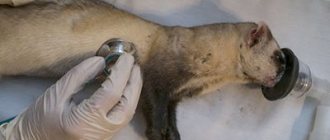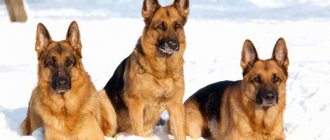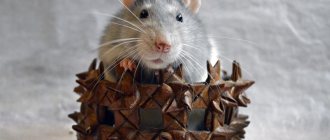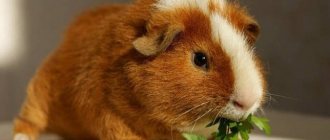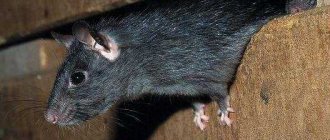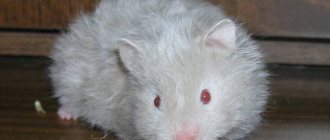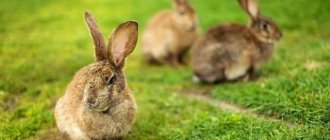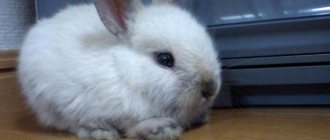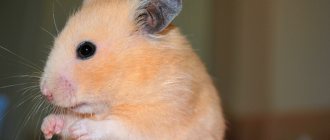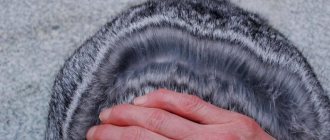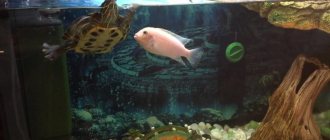The Shar Pei is a medium-sized dog with a very unusual appearance.
A characteristic feature of the breed is short, harsh hair and a complete absence of undercoat.
Another feature is the presence of deep folds in the skin, which make the Shar Pei unique.
The dog is distinguished by a powerful body, wide bones and a calm disposition.
The breed is also characterized by independence and devotion to all family members.
Life expectancy for boys and girls
How many years do Shar Peis live?
Despite its powerful build, the Shar Pei does not have a long life. On average, a dog lives about 10 years, but this figure can vary depending on various factors.
What you need to know:
- The average life expectancy of a female is 12 years, and that of a male is 10 years.
- With proper care and good maintenance, the maximum life expectancy for a female can reach 16 years, for a male - 14.
- The minimum life expectancy, under the same conditions, is for a female - 10 years, for a male - 8.
- If a dog suffers from genetic diseases, it will live on average 6–8 years.
Shar Pei girls live longer than boys, by about 2 years, and a sterilized dog lives less than the one that gave birth to puppies.
Expert opinion
Tolkachev Andrey Mikhailovich
veterinarian
“There are two factors that seriously affect the lifespan of Shar-Peis. The first is heredity, so when buying a puppy, inspect it carefully. The second is care and living conditions. If you do your best to meet the breed's needs, your dog can live up to 15 years. However, such a life expectancy is not typical for Shar-Peis.”
History of the breed
Modern Shar-Pei dogs, as they are designated by English-speaking dog breeders, are descended from Chinese hunting and guard dogs with a thousand-year history. There are fossil figurines of these animals in museums around the world. The modern breed is similar to its primitive ancestors in the shape of the head and body, but is much smaller in size.
Shar Pei family on a walk
Ancient Shar Peis had significant body weight (up to 80 kg), could hunt large animals, and were excellent watchdogs in pastures. Chinese peasants in the Middle Ages amused themselves by organizing fights between dogs of this breed. The living conditions of Shar Pei dogs and their life expectancy in those days were hardly of interest to the owners. Most likely, little care was taken for the animals, because they were very hardy and numerous animals.
In the 50s of the twentieth century, a change in the political system occurred in China. Rulers came to power who believed that ordinary people did not need pet dogs and introduced taxes on the right to own a purebred animal. As a result, poor people were forced to get rid of their dogs. There are practically no Shar Peis left in the country.
Due to the fact that several animals were exported outside of China, the breed continued to exist, but due to crossing with other types of dogs, it changed greatly. From a powerful animal, tall at the withers, sharpeis have become dogs no more than 50 cm high and weighing up to 30 kg in males and up to 25 kg in females.
Important! In purebred Shar-Pei animals, the body length is equal to the height at the withers
The new breed of dog was registered as the Shar-Pei breed. The breed standards recorded a modern version of the animal's body. Now these animals are practically unsuitable for the lifestyle that their ancestors led. Not only their appearance, but also their average vital signs have changed. The lifespan of a Shar Pei began to largely depend on the attitude of their owners towards them.
Ancient Chinese Shar Pei figurine
Age compared to human years
| Dog age | Dog age by human standards |
| 1 | 15 |
| 2 | 24 |
| 3 | 29 |
| 4 | 34 |
| 5 | 37 |
| 6 | 42 |
| 7 | 47 |
| 8 | 51 |
| 9 | 56 |
| 10 | 60 |
| 11 | 65 |
| 12 | 69 |
| 13 | 74 |
| 14 | 78 |
| 15 | 83 |
| 16 | 87 |
How to determine the age of a Shar Pei?
Criteria by which you can determine the age of a dog:
- Condition of teeth. A young dog's teeth are white and have characteristic cusps. At 2 years old, the tubercles on the hooks of the lower jaw begin to wear off. At 4 years old, the tubercles on the upper toes wear off. At the age of 5, the tubercles on the incisors wear off and the teeth turn yellow. At 6 years old, all the incisors are quite worn out and it becomes difficult to determine the bite. At 8–10 years old, the crowns of the teeth are significantly worn out, the teeth are yellow, and the fangs are blunt. At older ages, teeth become loose and fall out.
- Muscle tone and activity. The muscles of a young dog are always toned and have good tone, while the pet is active and full of strength. An older dog experiences sagging muscles, the dog becomes lazy, and becomes overweight.
- Condition of the coat. The young dog's coat is clean and smooth. As it ages, it loses these qualities, becoming duller and dirty in appearance. Also, an elderly dog turns gray when exposed to the sea.
- Eyes. The young dog has clarity and sparkle in his eyes. In an older dog, the eyes become cloudy and dull, and eye diseases often appear.
Main causes of premature death
There can be many reasons for the early death of a Shar Pei.
NOTE!
One of them is hereditary Shar Pei fever. The disease is characteristic only of this breed and is a specific disorder of the immune system; 25% of Shar Peis suffering from fever do not live to see 3 years of age.
Other reasons:
- Upper airway obstruction . The reason is anatomical abnormalities characteristic of brachycephalic breeds.
- Mastocytoma is a malignant skin tumor. In the initial stages, the disease looks like a slight redness and even a specialist cannot always make the correct diagnosis.
- Streptococcal toxic shock syndrome . A characteristic manifestation is damage to large areas of the skin. Wounds appear on the affected areas, which tend to spread into the roughness. The second manifestation is sudden death.
- Adenocarcinoma is a malignant tumor of the intestine.
Diseases
Shar Peis are prone to many diseases, also related to the skin.
They meet:
- Otitis is an inflammatory process in the ear, the main symptoms are any damage to the ears, any kind of discharge with an unpleasant odor, hair loss on the ears.
- Glaucoma is a large group of eye diseases. Symptoms include excessive secretion of the lacrimal gland, cloudiness of the sclera, complete refusal to eat or partial loss of appetite, and the development of partial disorientation.
- Atopy is a chronic skin disease. Scratches and ulcers appear on the skin.
- Primary seborrhea is excess sebum on the skin.
- Mastocytoma is a tumor that can appear on the skin and internal organs.
- Thyroid disease.
- At the slightest sign of any of these diseases, consult a doctor immediately.
If all points are fulfilled, your pet will live a long, happy life.
How to extend the life of a pet?
To keep your pet healthy and live long, follow these rules:
- When purchasing, choose only a strong and healthy puppy with a good exterior.
- Feed your pet only high-quality and balanced food, and he should be given vitamins and supplements with microelements.
- The pet must be vaccinated.
- Visit your veterinarian at least once every six months.
- Provide your dog with the necessary physical activity.
- Remember - the Shar Pei has no undercoat, the dog freezes in winter, and in summer it can get sunburned. Be sure to take this factor into account when walking.
- Take good care of your dog's skin and check it regularly for suspicious spots.
IMPORTANT!
Never overfeed your Shar Pei, as he is prone to obesity, and this has a detrimental effect on his joints and cardiovascular system.
Diagnostics
You can start diagnosing with a consultation and examination with a doctor. To do this, you need to contact a therapist, gastroenterologist, hepatologist or dentist. The doctor will conduct a survey and refer the patient for examination.
During the consultation, the doctor needs to describe in detail the existing symptoms, tell how often and under what circumstances bitterness appears. Information about lifestyle, diet, and existing diseases will be useful.
For diagnosis, the following studies are carried out:
- Duodenal sounding. If a malfunction of the biliary tract is suspected, portions of bile are taken using a probe for bacteriological examination, and the rate of excretion of bile into the duodenum is also assessed.
- Gastroscopy (EGDS, FGDS) is a study using a gastroscope. Allows you to examine the mucous membrane of the digestive organs and do a biopsy (take tissue samples for laboratory testing).
- Ultrasound of the liver, gall bladder and other organs. It is carried out to assess the size and presence of changes in internal organs.
- Lab tests. If diseases of the digestive organs or biliary tract are suspected, a stool test is prescribed. A biochemical blood test is performed if cholecystitis is suspected. A test for hCG and sex hormones, as well as a serological test if viral hepatitis is suspected, can also be performed.
Proper nutrition
If your dog is on a natural diet, then his menu must include:
- Raw meat and offal.
- Boiled sea fish.
- Eggs (2 times a week).
- Dairy products.
- Porridge (millet, rice, buckwheat or oatmeal).
- Fruits and vegetables.
An adult dog should receive an amount of food equal to 3.5% of its weight per day.
If you decide to feed your dog dry food, you should pay attention to the source of protein in it. The best option is veal or beef.
NOTE!
The feed should not contain corn, soy, wheat, animal fat, preservatives or dyes, and the amount of fat and protein should not exceed 25%.
Quality maintenance and care
Proper maintenance and care of a Shar Pei at home includes:
- Appropriate place. The dog's place in the house should be warm, cozy and suitable in size for the dog. It is best if the bedding is made of natural materials and not very soft. The place should provide the dog with a good view, but at the same time it should be protected from drafts.
- The dog should be brushed 2 times a week, bathed once every 2-3 months.
- Products and food for Shar Pei should be selected with special care due to the pet’s tendency to allergies.
- Be sure to give your dog vitamin complexes and food supplements with microelements.
- Clean and examine your pet's eyes daily. If purulent discharge appears, contact your veterinarian immediately.
- The dog's teeth should be brushed at least 3 times a week, as the breed is prone to the formation of tartar.
- The pet's ears are treated once a week, regardless of whether they are dirty or not.
- Your pet's nails should be trimmed as they grow. Use a special nail clipper with a limiter for this so as not to injure the dog.
Hereditary problems
The Shar Pei owner will have to pay special attention to the dog’s problems associated with genetic diseases:
- food allergies - can occur to any product and lead to serious consequences. New food should be given to Shar Peis in very small portions and the reaction monitored;
- folded skin – susceptible to infections, viruses, irritations, diaper rash;
- eyes – folds of skin “float” onto them, interfering with vision and causing irritation;
- ears - poorly ventilated ears must be cleaned and ventilated, otherwise infections, inflammations, and otitis media are not far away;
- massiveness – increases the risk of problems with the joints of the limbs and pelvis.
How to care for an older dog?
What happens to Shar Pei in old age:
- The musculoskeletal system suffers, which means that walks should become calmer and shorter. In bad weather, you shouldn't stay outside at all. Say no to slides and jumping structures, as these may harm your pet.
- As dogs get older, their eyesight often deteriorates. Therefore, regularly examine your dog's eyes and take him to the veterinarian often. At the first signs of cataracts, your doctor may prescribe treatment or surgery. In addition, a visually impaired pet should only be walked on a leash.
- An older dog should be bathed less often, as its immunity weakens as it gets older, and the pet may catch a cold more easily. It may make sense to use dry shampoo.
- An older dog's character may change; pets often become capricious, jealous and suspicious. Therefore, sometimes it is worth allowing them a little liberties.
- There is an increased need for protein. Feed your older dog food that contains higher amounts of protein. On the packaging of such food you will definitely see the inscription “For older dogs”.
- Often, as a Shar Pei gets older, it becomes incontinent. Don't scold him for this. It's just that now you have to walk him 3-4 times a day.
IMPORTANT!
When caring for an elderly dog, you should definitely take age-related changes into account and create all the conditions to provide your pet with a dignified old age.
